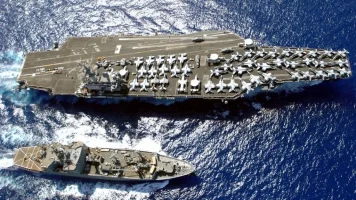- Views: 3K
- Replies: 10

The Pakistan Air Force (PAF) is facing a critical juncture as it grapples with an aging fleet of fighter jets while striving to maintain a credible deterrent against the Indian Air Force (IAF).
While the IAF is dealing with its own challenges of dwindling squadron numbers and upcoming retirements, the PAF is under pressure to modernize its force and ensure its operational readiness for future conflicts.
The PAF has traditionally maintained a fleet of around 450 fighter jets to balance the IAF's strength. However, the aging of its frontline aircraft, particularly the Mirage III and Mirage 5 fleet, poses a significant challenge.
These aircraft, which once formed the backbone of the PAF, are now over 50 years old. With France no longer supplying spare parts or used airframes, their reliability is declining, as evidenced by a rise in crashes in recent years.
To address this, the PAF is pursuing a multi-pronged modernization strategy:
- JF-17 Thunder Block IV: The PAF plans to replace its aging Mirage fleet with 100 JF-17 Thunder Block IV jets under the PFX program. This advanced variant is expected to feature improved stealth capabilities and upgraded avionics, ensuring its relevance in modern combat.
- J-10C Vigorous Dragon: To further bolster its fleet, the PAF intends to acquire an additional 20-30 J-10C Vigorous Dragon jets from China. These 4.5-generation fighters will enhance the PAF's air superiority capabilities.
- J-35A Stealth Fighter: Looking to the future, the PAF is also eyeing the J-35A, a fifth-generation stealth fighter, with plans to acquire approximately 50 units. The J-35A will replace older platforms and provide the PAF with advanced stealth, sensor fusion, and next-generation combat capabilities.
The PAF also plans to phase out its aging F-7 and F-16 fighter jets in the coming decades. The F-7, based on the Mig-21 design, is nearing the end of its operational life, while the F-16s, though still capable, are approaching 40 years of service.
By pursuing this modernization strategy, the PAF aims to address the challenges posed by its aging fleet and ensure it remains a potent force capable of meeting future operational requirements.
The acquisition of advanced fighter jets like the J-10C and J-35A will be crucial in maintaining a balance of power in the region and safeguarding Pakistan's airspace.




